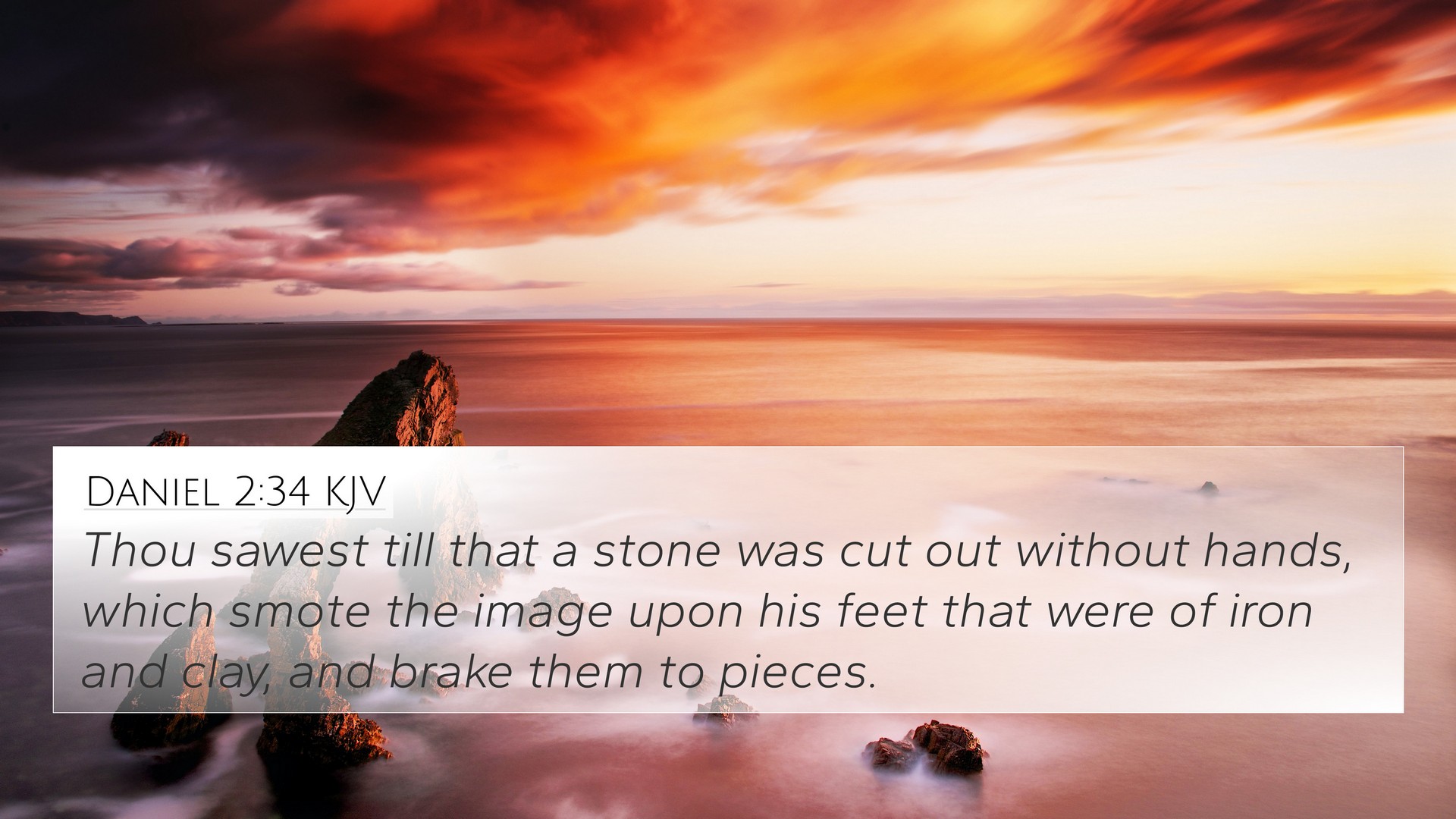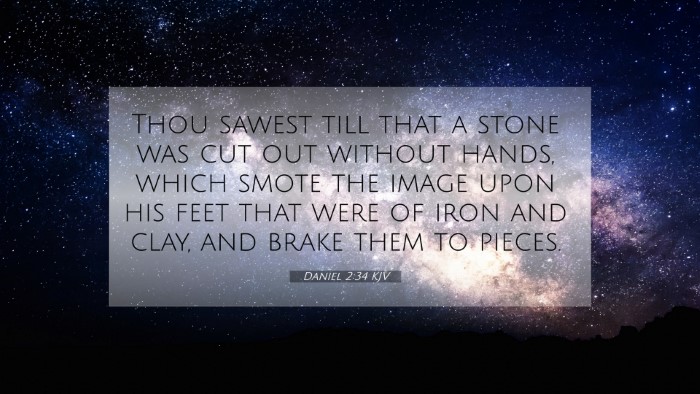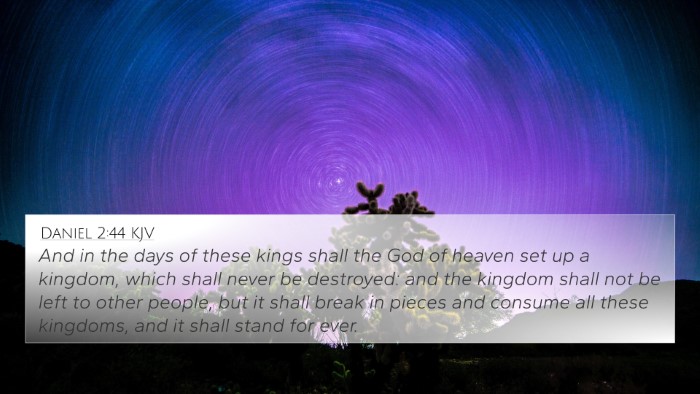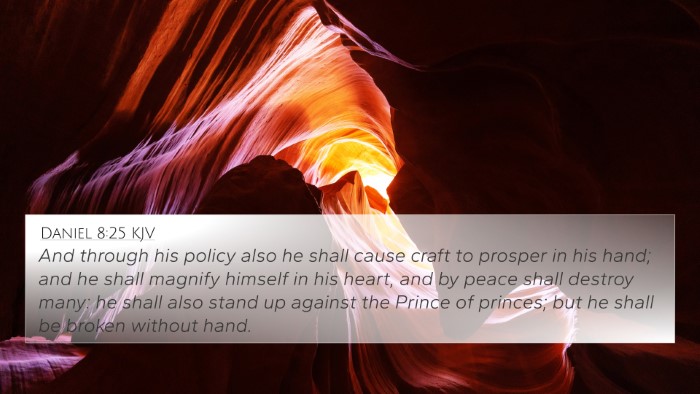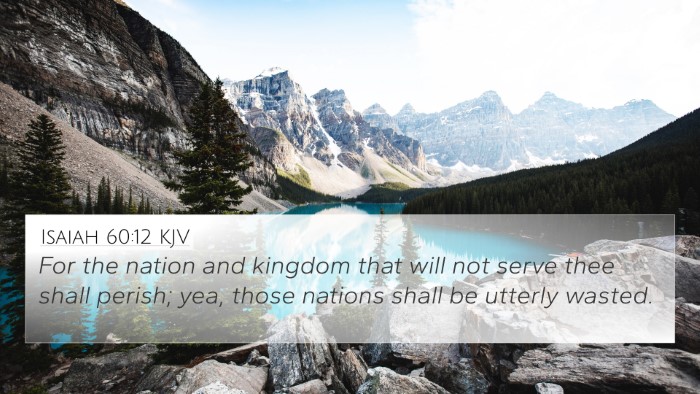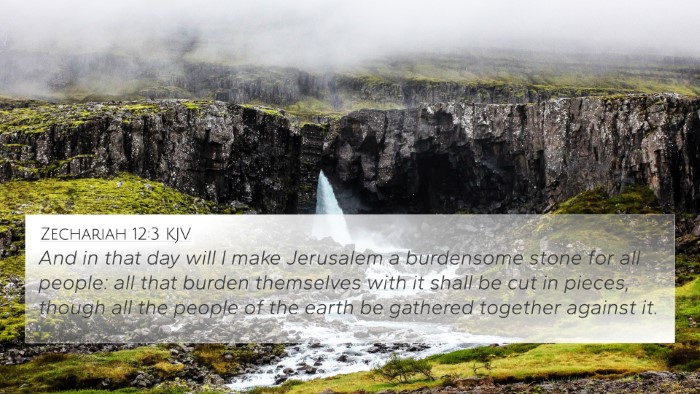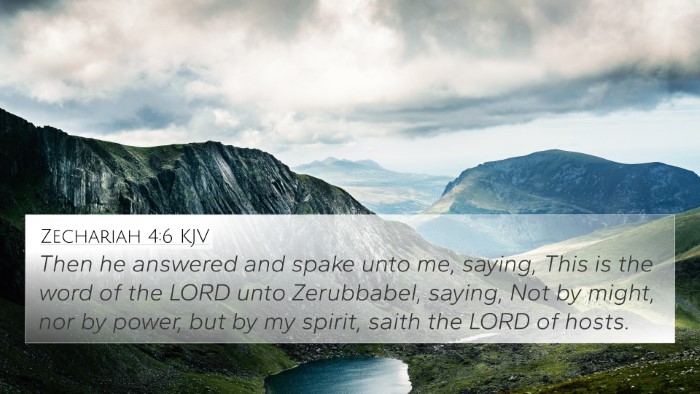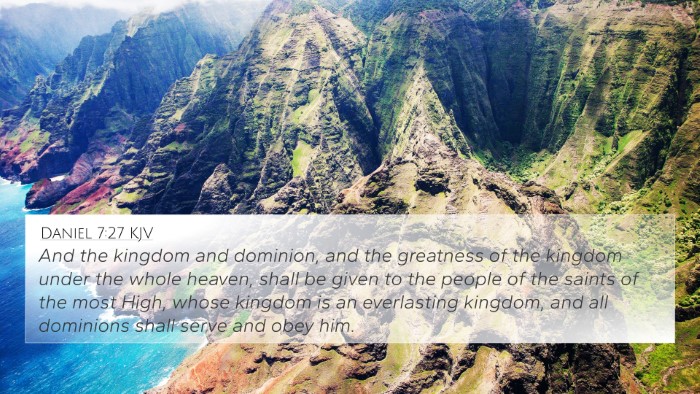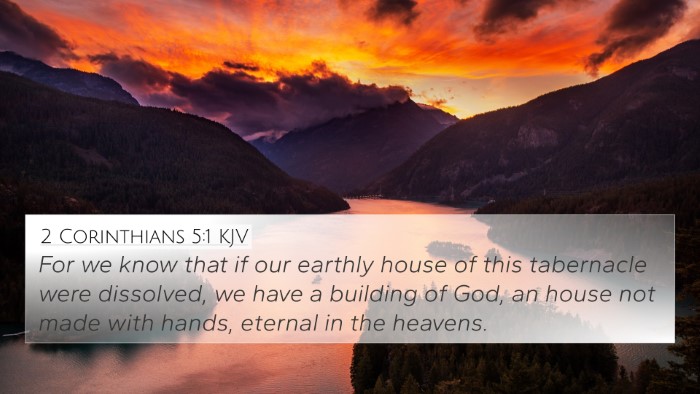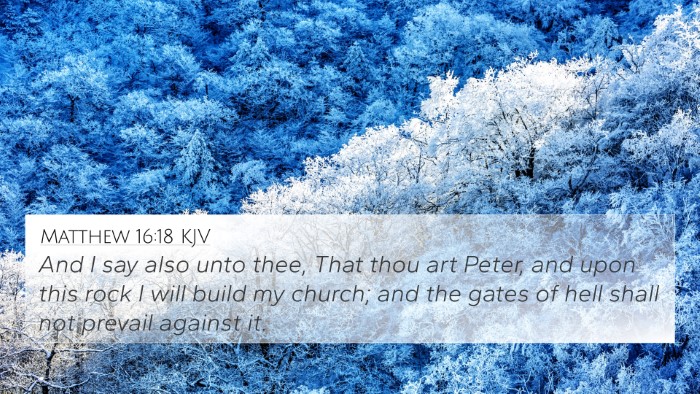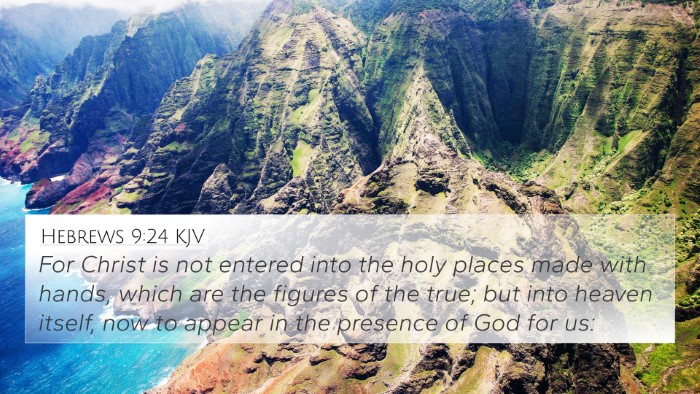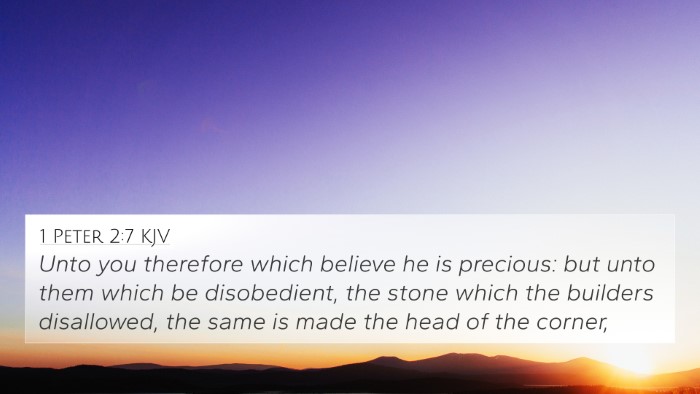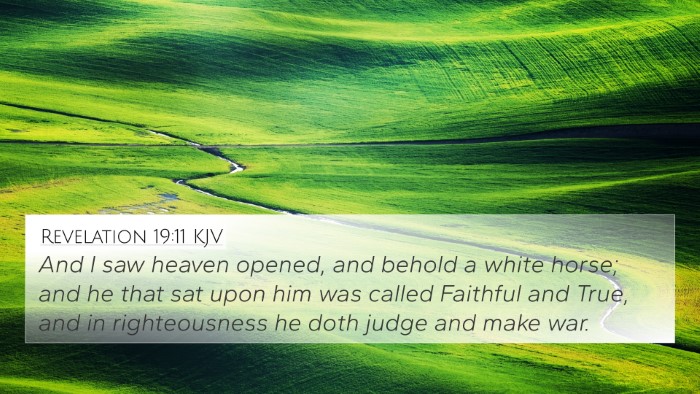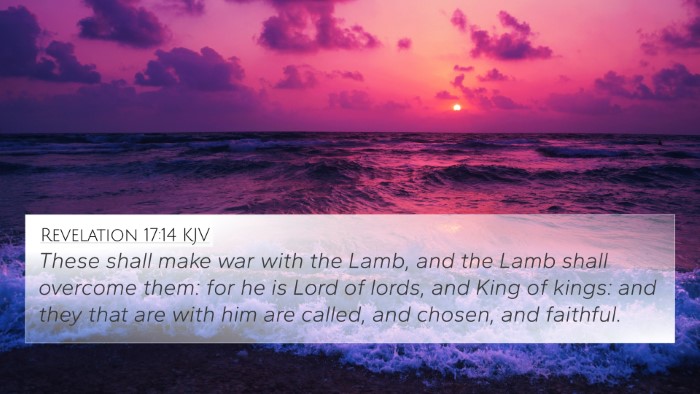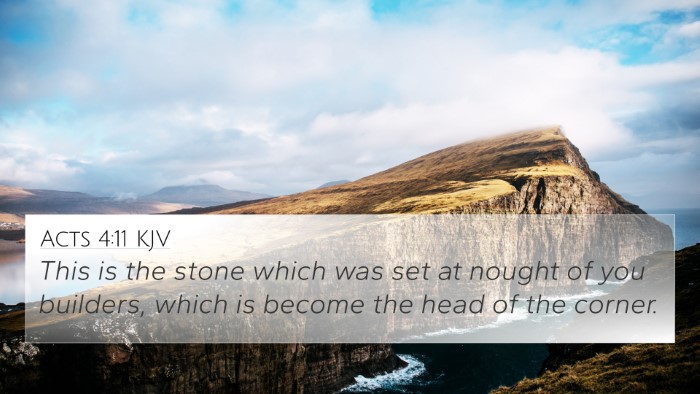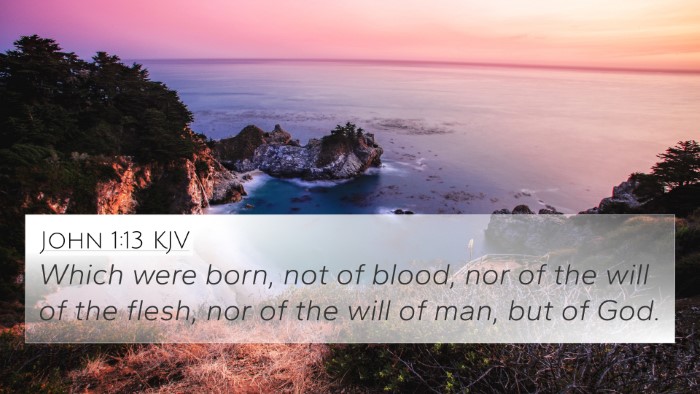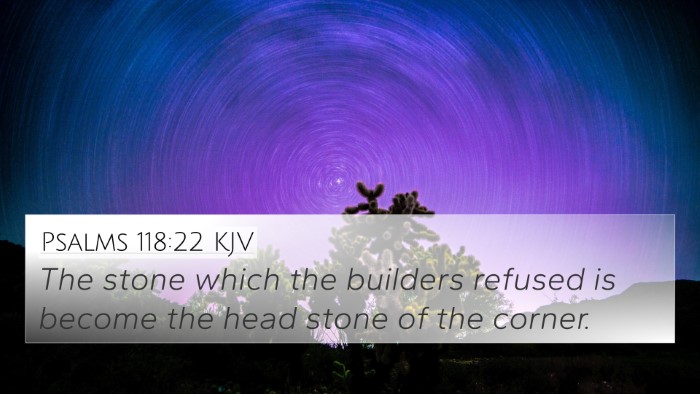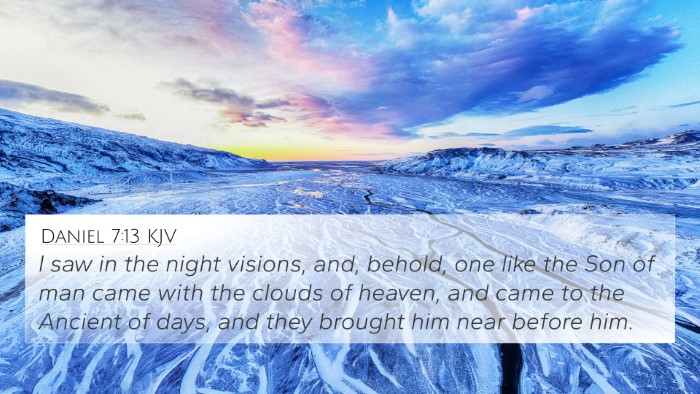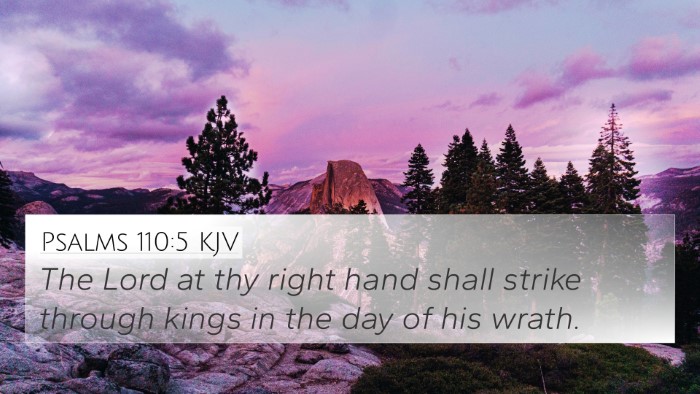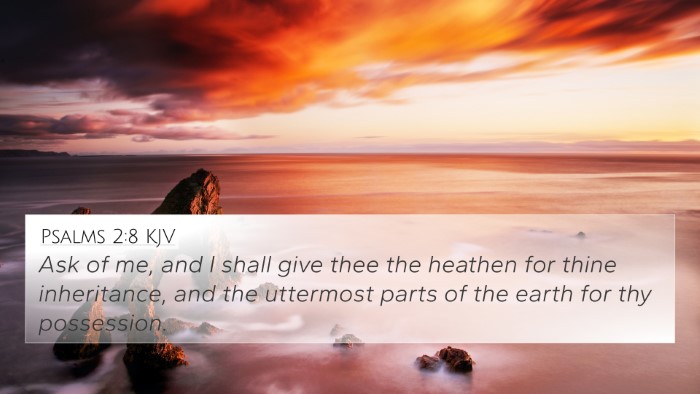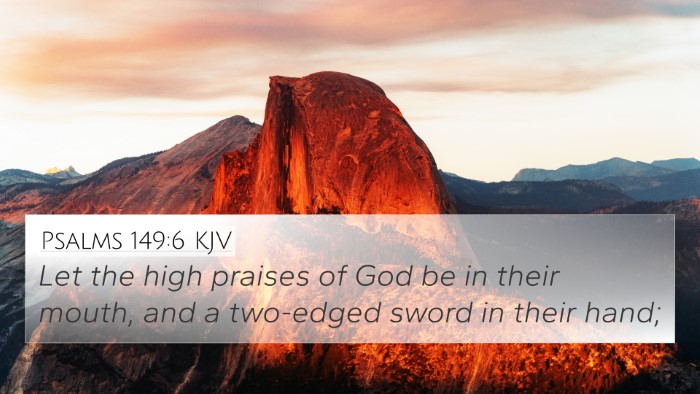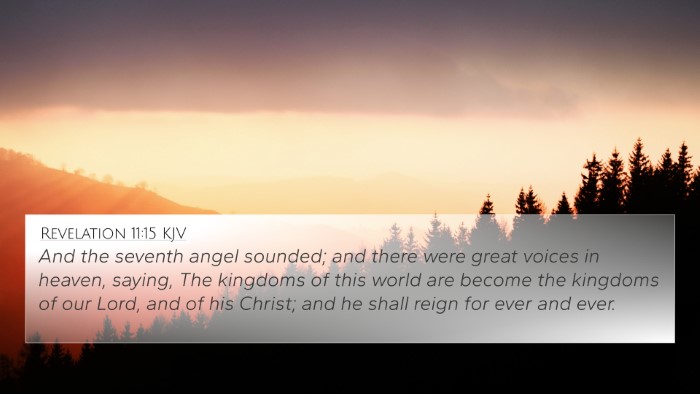Understanding Daniel 2:34
Verse: "Thou sawest till that a stone was cut out without hands, which smote the image upon his feet that were of iron and clay, and brake them to pieces." (Daniel 2:34)
Contextual Overview
In this verse, Daniel interprets King Nebuchadnezzar's dream about a colossal statue, symbolizing various kingdoms. The stone "cut out without hands" represents God's divine intervention in history, emphasizing the ultimate sovereignty of God's kingdom over earthly kingdoms.
Commentary Insights
This section consolidates insights from respected public domain commentaries such as those by Matthew Henry, Albert Barnes, and Adam Clarke.
Matthew Henry's Commentary
Matthew Henry emphasizes the significance of the stone representing Christ, who is the true Rock. He notes that this stone "smote the image" signifies the breaking of earthly powers through the establishment of God's kingdom. The emphasis is on the divine origin of the stone, showcasing that it wasn't formed through human means but through God's will. This suggests the transcendence of God's plan over human endeavors.
Albert Barnes' Notes
Albert Barnes elaborates on the characteristics of the stone. He states that the stone "cut out without hands" symbolizes a miraculous intervention by God, indicating that God will establish His kingdom in a way that completely disrupts human authority. Barnes posits that this verse serves as a promise of restoration for God's people, who might be oppressed under human kingdoms. The divine shattering of the statue symbolizes the ultimate triumph of righteousness over wickedness.
Adam Clarke's Commentary
Adam Clarke interprets the "stone" as a metaphor for the gospel, which starts small but grows immensely, overcoming all opposition. He notes the lack of human involvement in the stone's creation emphasizes that God's kingdom does not rely on human strength or methodology. Clarke further identifies the feet of iron and clay, suggesting the fragility and decay of earthly kingdoms when faced with divine authority.
Thematic Connections
Daniel 2:34 shares strong thematic connections with several other Bible verses:
- Isaiah 28:16: "Therefore thus says the Lord God, 'Behold, I lay in Zion for a foundation a stone, a tried stone, a precious cornerstone, a sure foundation; whoever believes will not act hastily.'" - Relates to the theme of a divinely appointed cornerstone.
- Psalm 118:22: "The stone which the builders refused is become the head stone of the corner." - This reflects the rejection of Christ as pivotal yet foundational to God's design.
- Matthew 21:44: "And whosoever shall fall on this stone shall be broken: but on whomsoever it shall fall, it will grind him to powder." - This echoes the theme of divine judgment and the transformative power of the Messiah.
- 1 Peter 2:6: "Wherefore also it is contained in the scripture, Behold, I lay in Sion a chief corner stone, elect, precious: and he that believeth on him shall not be confounded." - Illustrates Jesus as the cornerstone of faith.
- Revelation 11:15: "And the seventh angel sounded; and there were great voices in heaven, saying, The kingdoms of this world are become the kingdoms of our Lord, and of his Christ; and he shall reign for ever and ever." - Indicates the final victory of God's kingdom.
- Hebrews 12:26: "Whose voice then shook the earth: but now he hath promised, saying, Yet once more I shake not the earth only, but also heaven." - Reflects God's ultimate authority and the shaking of earthly structures.
- Acts 4:11: "This is the stone which was set at nought of you builders, which is become the head of the corner." - Restates Jesus’ position as central in God’s plan.
Cross-Referencing Biblical Texts
The study of Daniel 2:34 encourages deeper exploration and connection to other scriptures, exemplifying the utility of tools for Bible cross-referencing:
- Bible concordance: Helpful for identifying similar themes and keywords across scriptures.
- Bible cross-reference guide: Useful for thematic studies and understanding interrelated verses.
- Cross-reference Bible study: Encourage linking different passages for comprehensive understanding.
- Bible reference resources: Aid in identifying connections between Old and New Testament teachings.
Understanding Through Cross-References
Using cross-references allows for a comparative analysis of the verse, providing insights into the continuity of God’s message throughout the Scriptures. For instance, the parallels between Daniel’s prophecy and New Testament fulfillment in Jesus Christ highlight a consistent theme of God's sovereignty:
- Comparative analysis provides clarity on God’s eternal plan.
- Cross-referencing the prophetic writings with their New Testament realizations articulates the unity of Scripture.
Conclusion
Daniel 2:34 presents a profound truth about the sovereignty of God and His kingdom. By employing various commentaries and cross-references, we can see the larger narrative of scripture unfolding. Reflecting on this verse leads to deeper insights into the nature of God’s rulership and the ultimate triumph over human arrogance and rebellion.
